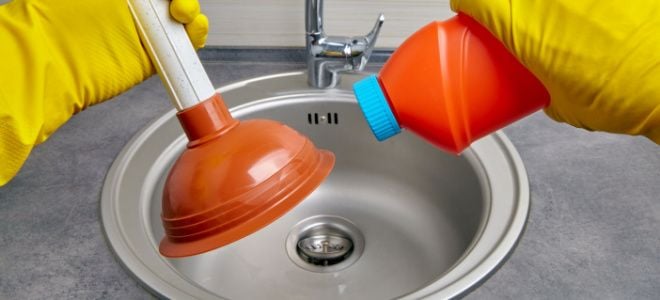Efficient Plungers and Drain Cleaner Methods: Key Practices
Efficient Plungers and Drain Cleaner Methods: Key Practices
Blog Article
They are making a number of good observations related to How to Unclog Your Sink with a Plunger as a whole in this post down below.

Intro
Appropriate maintenance of home drains is vital for stopping clogs and ensuring smooth water circulation. Among the secret tools in every home owner's toolkit is the bettor, together with various drain cleansers designed to take on persistent clogs effectively. This write-up explores just how to make use of plungers and drainpipe cleansers effectively to keep your drains flowing freely.
Area 1: Recognizing Plungers
Sorts of Plungers
There are several kinds of plungers available, each designed for different types of drains pipes and clogs. One of the most common types consist of cup plungers, flange plungers, and accordion bettors.
Just How Plungers Work
Plungers service the concept of creating pressure and suction to remove obstructions. When effectively applied over a drain, they produce a vacuum cleaner that can take out debris or separate obstructions.
Picking the Right Bettor
Picking the right bettor relies on the sort of drainpipe and the nature of the obstruction. Mug plungers are suitable for sinks and bathtubs, while flange bettors are better suited for commodes as a result of their layout.
Usual Errors with Plungers
Avoiding these blunders makes certain reliable plunging: incorrect seal around the drain, not enough pressure, and not clearing bordering particles.
Section 2: Making Use Of Plungers Successfully
Preparation
Prior to plunging, ensure the plunger covers the drainpipe totally and forms a limited seal. Clear any kind of noticeable debris around the drain opening.
Strategy
Beginning with gentle diving motions to develop suction. Rise pressure slowly, making use of a steady rhythm. Repeat as needed till the drainpipe clears.
Fixing Tips
If plunging does not function, attempt readjusting the seal, using oil jelly for a better seal, or using a different type of plunger.
Section 3: Understanding Drain Cleaners
Types of Drain Cleansers
Drain pipes cleansers can be chemical or enzymatic. Chemical cleaners utilize solid chemicals to liquify blockages, while enzymatic cleaners use natural enzymes to break down organic matter.
How Drain Cleaning Company Job
Chemical cleansers react with clogs to dissolve them, while chemical cleaners break down organic materials like hair and oil without damaging pipes.
Safety Factors to consider
Constantly wear gloves and eye security when using chemical drainpipe cleansers. Guarantee adequate air flow and follow supplier directions thoroughly.
Eco-Friendly Alternatives
Consider utilizing vinegar and cooking soda or enzyme-based cleansers for environment-friendly options that are much safer for pipelines and the atmosphere.
Section 4: Utilizing Drainpipe Cleansers Efficiently
Application Strategies
Pour chemical cleaners straight right into the drain opening. Enable them to benefit the recommended time prior to purging with warm water. Enzymatic cleaners must rest over night.
Preventative measures
Avoid mixing different kinds of cleansers, as this can create poisonous fumes. Never ever use chemical cleaners along with a plunger, as splashing can occur.
Handling Stubborn Clogs
For relentless obstructions, take into consideration making use of a pipes serpent or calling an expert plumber to prevent damages to pipelines.
Final thought
In conclusion, recognizing exactly how to utilize plungers and drainpipe cleaners efficiently is crucial for keeping healthy pipes systems. By selecting the right tools and methods, homeowners can take on minor obstructions and stop significant plumbing concerns down the line.
How to Use a Plunger to Unclog a Drain
The humble plunger is a simple yet effective tool for breaking clogs in sinks, tubs and toilets. This handy tool is easy to use. You can make the most of its power if you understand how it works. Ready to dive in? Here’s what you need to know.
Safety First!
Never use a plunger with drain chemicals. Water will splash as you work, and the chemicals can spatter, burning skin and eyes. It’s a good idea to use rubber gloves and wear safety goggles when you work on a clog.
Choose the Right Tool for the Job
Plungers come in two different styles. Sinks, bathtubs and showers require a cup plunger. Like its name suggests, the rubber end is shaped like a cup. Use a flange plunger on toilets. These plungers have a rubber funnel extending from the cup. A plunger needs to be big enough to cover the drain.
Ready, Set, Plunge!
Coat the rim: Coat the plunger rim with petroleum jelly. This helps make a better seal.
Block outlets: Hold a wet rag over nearby outlets such as the overflow vent or the drain in a second sink.
Release air: Insert the plunger at an angle into the water. Water will displace air in the cup. A water-filled cup is more forceful than one filled with air.
Keep the plunger upright: Hold the plunger perpendicular to the drain. Use fast, forceful strokes, but make the first stroke gentle. The first stroke can create a splash if the cup still contains air. Thrust the plunger 15 to 20 times.
Snap off the plunger: The final stroke should be a strong upward motion that ends when the plunger snaps off the drain.
Repeat the process: you may need to repeat this sequence several times. When the water drains away, your work is done. High-five! https://plumbernw.com/blog/how-to-use-a-plunger-to-unclog-a-drain/

Application Strategies
Pour chemical cleaners straight right into the drain opening. Enable them to benefit the recommended time prior to purging with warm water. Enzymatic cleaners must rest over night.
Preventative measures
Avoid mixing different kinds of cleansers, as this can create poisonous fumes. Never ever use chemical cleaners along with a plunger, as splashing can occur.
Handling Stubborn Clogs
For relentless obstructions, take into consideration making use of a pipes serpent or calling an expert plumber to prevent damages to pipelines.
Final thought
In conclusion, recognizing exactly how to utilize plungers and drainpipe cleaners efficiently is crucial for keeping healthy pipes systems. By selecting the right tools and methods, homeowners can take on minor obstructions and stop significant plumbing concerns down the line.
How to Use a Plunger to Unclog a Drain
The humble plunger is a simple yet effective tool for breaking clogs in sinks, tubs and toilets. This handy tool is easy to use. You can make the most of its power if you understand how it works. Ready to dive in? Here’s what you need to know.
Safety First!
Never use a plunger with drain chemicals. Water will splash as you work, and the chemicals can spatter, burning skin and eyes. It’s a good idea to use rubber gloves and wear safety goggles when you work on a clog.
Choose the Right Tool for the Job
Plungers come in two different styles. Sinks, bathtubs and showers require a cup plunger. Like its name suggests, the rubber end is shaped like a cup. Use a flange plunger on toilets. These plungers have a rubber funnel extending from the cup. A plunger needs to be big enough to cover the drain.
Ready, Set, Plunge!
Coat the rim: Coat the plunger rim with petroleum jelly. This helps make a better seal. Block outlets: Hold a wet rag over nearby outlets such as the overflow vent or the drain in a second sink. Release air: Insert the plunger at an angle into the water. Water will displace air in the cup. A water-filled cup is more forceful than one filled with air. Keep the plunger upright: Hold the plunger perpendicular to the drain. Use fast, forceful strokes, but make the first stroke gentle. The first stroke can create a splash if the cup still contains air. Thrust the plunger 15 to 20 times. Snap off the plunger: The final stroke should be a strong upward motion that ends when the plunger snaps off the drain. Repeat the process: you may need to repeat this sequence several times. When the water drains away, your work is done. High-five! https://plumbernw.com/blog/how-to-use-a-plunger-to-unclog-a-drain/

I am just very intrigued by How to Unclog Your Sink with a Plunger and I'm hoping you liked our blog entry. Do you know somebody else who is intrigued by the topic? Be sure promote it. Thanks for going through it.
Get A Free Estimate Report this page